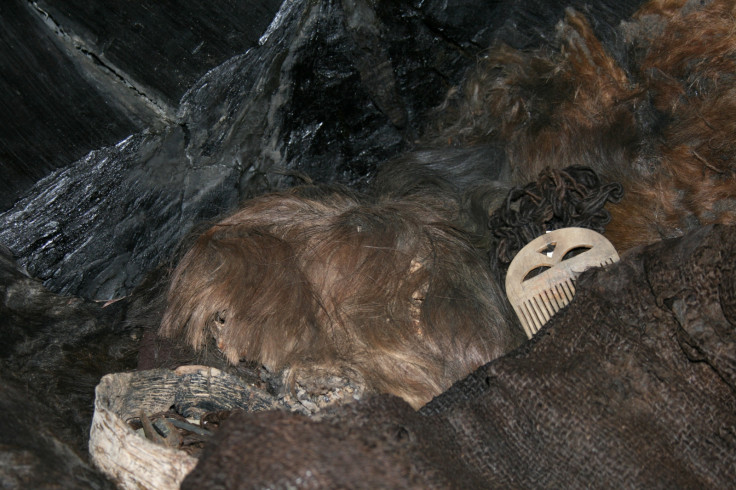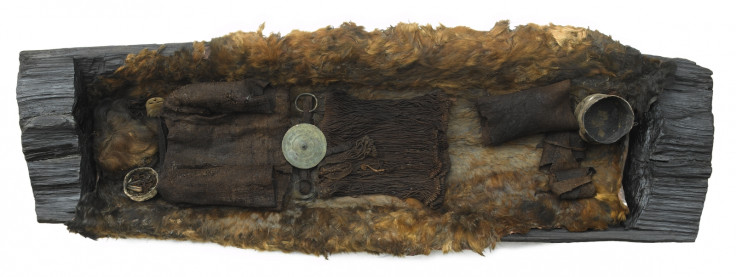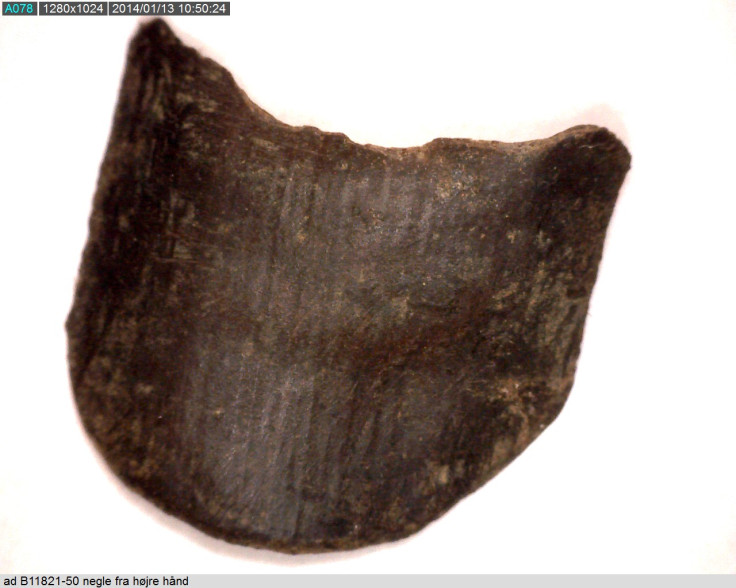Egtved Girl: Bronze Age woman was high-born German sent to Denmark for marriage

Denmark's famous Egtved Girl was likely a high-born woman from Germany who was given in marriage to forge an alliance between two powerful families, scientists have said.
The Egtved Girl was discovered in 1921, being found in an oak coffin on the outskirts of the Egtved village in Denmark.
Her burial dates to around 1370BC and she was between 16 and 18 at the time of her death. Her well-preserved remains included her hair, brain, teeth, nails and a little skin. Previous research has shown she was around 160cm tall, had short, blonde hair and well-manicured nails.
Scientists from the National Museum of Denmark and University of Copenhagen have now carried out further analysis of her remains to discover she was not from Denmark at all – instead, strontium isotope data showed she was born and raised hundreds of miles away, probably in Southern Germany, and that she only arrived in Egtved shortly before her death.
The findings, published in the Nature journal Scientific Reports, show that the girl's clothing, the blanket she was covered in and the oxhide she was laid to rest on came from a location outside of Denmark.

Instead, her clothes and oxhide came from Schwarzwald – the Black Forest – in south west Germany. The same was true of the six-year-old child who was buried with the Egtved Girl.
Scientists were able to find out about the last two years of the girl's life through strontium – an element that is absorbed by humans and animals through water and food. Measuring it allows researchers to determine where people and animals lived.
Senior researcher Karin Margarita Frei said: "I have analysed the strontium isotopic signatures of the enamel from one of the Egtved Girl's first molars, which was fully formed/crystallized when she was three or four years old, and the analysis tells us that she was born and lived her first years in a region that is geologically older than and different from the peninsula of Jutland in Denmark."
By examining her 23cm-long hair, Frei was also able to determine that the girl had been on a long journey in the two years before her death – moving from her home town to Jutland. After spending around nine months there, she travelled back home where she lived for six months, before heading to Egtved - she died around a month after arriving.

Study collaborator Kristian Kristiansen, from the University of Gothenburg, said the Egtved Girl was probably high-born and that she was given away for marriage to forge bonds between two powerful families. At the time, there were close relations between Denmark and Southern Germany.
Denmark was rich in amber, and it traded it with the Mediterranean and Middle East for bronze, with southern Germany acting as middleman.
"In Bronze Age Western Europe, Southern Germany and Denmark were the two dominant centres of power, very similar to kingdoms. We find many direct connections between the two in the archaeological evidence, and my guess is that the Egtved Girl was a Southern German girl who was given in marriage to a man in Jutland so as to forge an alliance between two powerful families," Kristiansen said.
"Amber was the engine of Bronze Age economy, and in order to keep the trade routes going, powerful families would forge alliances by giving their daughters in marriage to each other and letting their sons be raised by each other as a kind of security."
Embargo 10am
© Copyright IBTimes 2024. All rights reserved.






